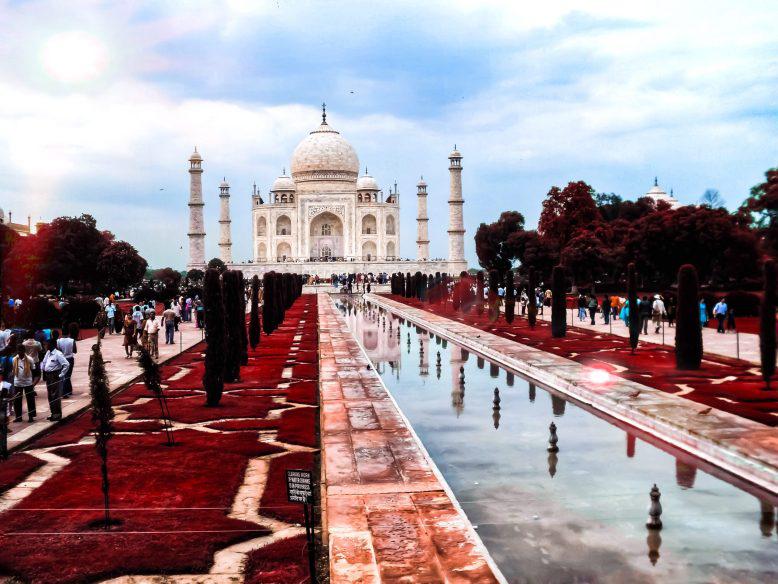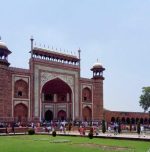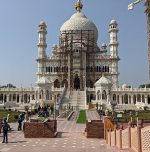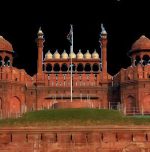The original name of the Taj Mahal

Before the world knew it as the Taj Mahal, this magnificent monument had a different name, “Rauza-i-Munawwara,” meaning “Illuminated Tomb” in Persian.
During its early construction in the 1600s, this was the name used for the grand mausoleum that Mughal Emperor Shah Jahan built in memory of his beloved wife, Mumtaz Mahal.
Over time, it became famous as the Taj Mahal, but its original identity remains an important part of history.
The construction of Rauza-i-Munawwara began in 1632 AD, and the main structure was completed by 1648 AD.
However, additional features, including the mosque, guest house, and the southern gateway, were added later, finishing in 1653 AD.
This masterpiece blends Persian, Ottoman, Indian, and Islamic architectural styles, showcasing the finest craftsmanship of the Mughal era.
Shah Jahan brought together the best artisans from India, Persia, and Central Asia to build this breathtaking monument.
The structure was made using Makrana white marble, adorned with precious stones like jade from China, turquoise from Tibet, and sapphire from Sri Lanka.
The walls were intricately carved with floral patterns and Quranic inscriptions, adding to its artistic brilliance.
The cost of constructing Rauza-i-Munawwara was around ₹32 million, a vast sum in those times.
The emperor ensured that no expense was spared in creating a symbol of eternal love and devotion. Its symmetrical gardens, reflecting pools, and minarets make it one of the most breathtaking monuments in the world.
The UNESCO declared the Taj Mahal a World Heritage Site in 1983. Recognized as one of the Seven Wonders of the World, it remains an enduring marvel.
The monument’s stunning beauty and precise craftsmanship make it an unforgettable sight.
Even though the name Rauza-i-Munawwara is rarely used today, its meaning is the Illuminated Tomb. It perfectly describes the way this monument glows under sunlight and moonlight.
Though history renamed it, the essence of love, loss, and remembrance remains unchanged.
The Taj Mahal, once Rauza-i-Munawwara, continues to be a symbol of undying love and architectural brilliance.
Image by Neeraj from Pixahive (Free for commercial use / CC0 Public Domain)
Image Published on January 14, 2021
You may also like
Image Reference: https://pixahive.com/photo/the-taj-mahal/
Recent Posts
- Safe home remedies & first aid tips for minor burns this DiwaliMild burns generally heal within one to two weeks without scarring if treated correctly at home.
- LIC Bima Lakshmi, a savings & protection plan for womenLIC Bima Lakshmi allows flexibility in choosing the premium paying term, ranging from 7 to 15 years.
- RRB NTPC Graduate Level Recruitment 2025After appearing in the CBT exam, a refund of ₹400 will be made to General, OBC, and EWS candidates and ₹250 to others.
- Safe home remedies & first aid tips for minor burns this Diwali
What’s new at WeRIndia.com
News from 700+ sources
-
Womens WC: New Zealand Elect To Bat First Against England In Devines Farewell Game
-
Tejashwi promises pension, allowance hike for Bihars panchayati raj representatives if INDIA bloc wins
-
Indias Air Pollution Crisis Now Full-Blown Assault On Brains, Bodies: Congress
-
Passenger vehicle exports rise 18% in April-September; Maruti Suzuki leads segment
-
India’s air pollution crisis now full-blown assault on brains, bodies: Congress
-
The valuation email that defined Zomato’s IPO: Why Sanjeev Bikhchandani’s warning to Deepinder Goyal still echoes
-
WeRIndia – A News Aggregator
Visit werindia.com for all types of National | Business | World | Politics | Entertainment | Health related news and much more..









